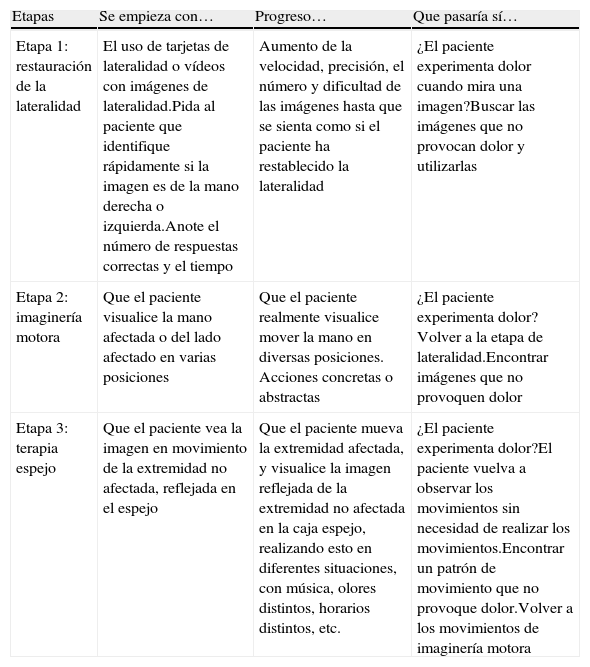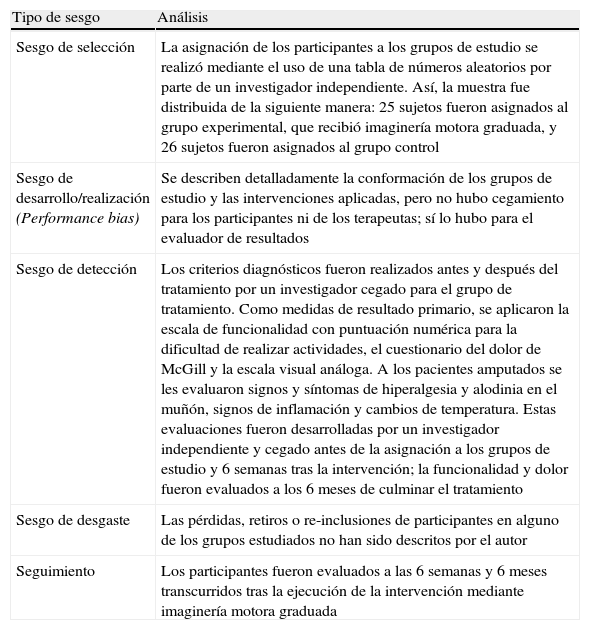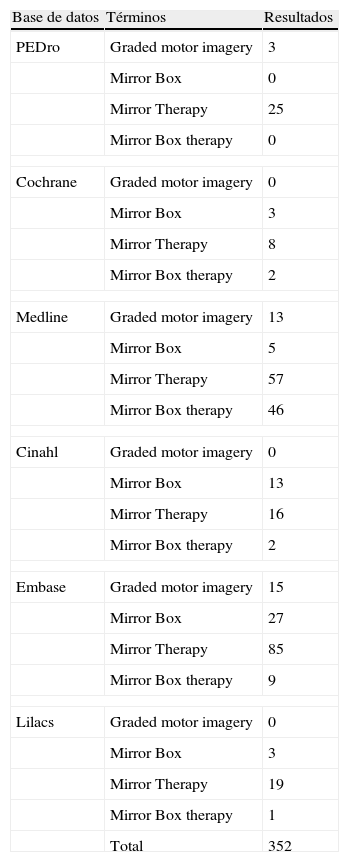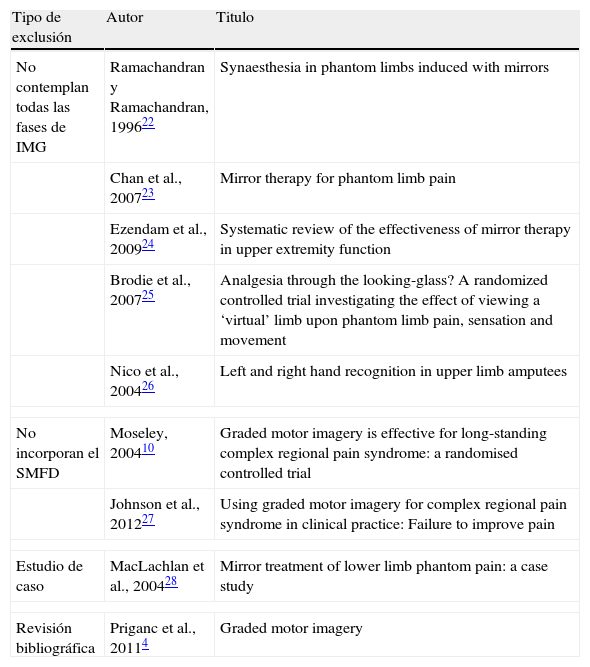El objetivo de este estudio es determinar la evidencia científica del tratamiento de imaginería motora graduada (IMG) aplicado al síndrome de miembro fantasma con dolor (SMFD).
Estrategia de búsquedaSe realizó una búsqueda electrónica en las bases de datos: PEDro, Cochrane, MEDLINE, CINAHL, EMBASE y LILACS, de los artículos publicados entre el 1 de enero de 1990 y el 19 de abril de 2012.
Selección de estudiosSe identificaron 352 artículos potencialmente elegibles para nuestra búsqueda, de los cuales 10 documentos primarios fueron examinados en función del título y el resumen. De los 10 documentos primarios examinados al aplicar los límites de búsqueda y los criterios de selección, se incluyó solo un artículo.
ResultadosEl artículo incluido aplicó la técnica de IMG a 51 pacientes con SMFD, teniendo cada una de las 3 fases del tratamiento una duración de 2 semanas. Este estudio concluyó que el tratamiento con IMG reduce el dolor y la discapacidad en estos pacientes, pero los mecanismos de los efectos no están claros.
DiscusiónExiste moderada evidencia de que la IMG reduce el SMFD. La técnica es prometedora para pacientes con dolor crónico, pero se necesita de una mayor investigación adicional en ensayos aleatorios con un tamaño de la muestra adecuado para establecer si existe una función real de cada una de las fases de la IMG en el tratamiento del SMFD.
This study has aimed to determine the scientific evidence of Graded Motor Imagery (GMI) treatment applied to Phantom limb syndrome with pain (PLP).
Search strategyWe made an electronic search in the following databases: PEDro, Cochrane, MEDLINE, CINAHL, EMBASE and LILACS for articles published from 1 January 1990 to 19 April 2012.
Study screening352 articles were identified as potentially eligible through our search. Of these, 10 primary document were examined based on title and summary. Of the 10 primary documents examined by applying the search and selection criteria limits, only 1 article was included.
ResultsThe article included had applied the GMI technique to 51 patients with PLP, each of the three phase of treatment having a duration of two weeks. This study concluded the treatment with GMI reduced pain and disability in these patients, however the mechanisms of the effects were not clear.
DiscussionThere is moderate evidence that GMI reduces PLP. The technique is promising for patients with chronic pain but further research is needed in randomized trials with adequate sample size to determine whether there is a real function of each one of the GMI phases in the treatment of PLP.
Artículo
Comprando el artículo el PDF del mismo podrá ser descargado
Precio 19,34 €
Comprar ahora












